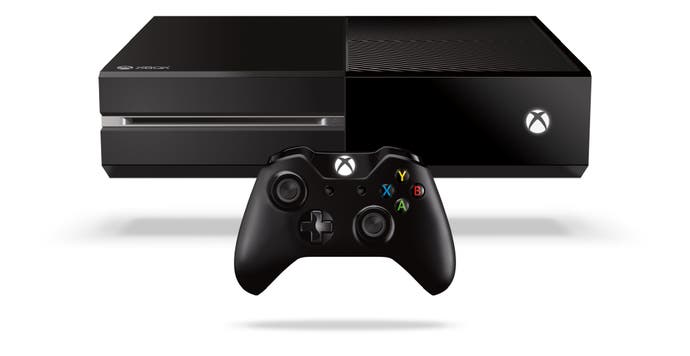Xbox One without Kinect "levels the playing field" with PS4
Analyst predicts 10 per cent sales boost following latest U-turn.
Microsoft's decision to sell a version of Xbox One without divisive motion sensor Kinect from this June levels the playing field with Sony and its runaway PlayStation 4, analysts have told Eurogamer.
Today Microsoft announced that from 9th June 2014 it will sell Xbox One without Kinect for £349 in the UK. Microsoft sells the Xbox One with Kinect for £399.
The move is widely seen as an attempt to boost sales of the Xbox One, which are lagging behind the cheaper £350 PlayStation 4.
"I think lowering price levels the playing field," Wedbush Morgan analyst Michael Pachter told Eurogamer.
"Most gamers didn't appreciate why they needed Kinect, and many weren't willing to pay for it. Microsoft was smart to acknowledge that and to give gamers a choice."
IHS Technology's head of games Piers Harding-Rolls called it a "bold but sensible decision to compete on a level playing field" with the PS4.
"Ultimately the company has decided to sacrifice the necessity of Kinect to reduce purchasing friction and collapse the price differential between the two consoles," he said.
"There is now a much more gamer focused edge to the Xbox One positioning, which will only help Microsoft in these opening stages of the latest console cycle."
"Most gamers didn't appreciate why they needed Kinect, and many weren't willing to pay for it. Microsoft was smart to acknowledge that and to give gamers a choice."
Wedbush Morgan analyst Michael Pachter
Sony has sold seven million PlayStation 4s to customers since it launched late last year, whereas Microsoft has shipped five million units to retailers. Both consoles are selling at a faster rate than their predecessors.
With Microsoft's E3 press conference set for 9th June, the company is expected to focus on the core gamer aspect of the Xbox One and the exclusive games and downloadable content available for it this Christmas.
This, coupled with the availability of the Kinect-less Xbox One and the removal of the Xbox Live Gold paywall for streaming apps, could provide an early boost to Xbox One. According to Pachter, Xbox One sales could rise by 10 per cent.
"I think the two consoles will evenly split the market going forward, and that overall sales will probably rise by 10 per cent or more due to the lower price point," Pachter said.
Harding-Rolls also expects a sales spike, and Sony to react at E3.
"The price drop will have a positive impact on Xbox One sales," he said. "We will be reviewing our forecasts in the light of this announcement. While Sony will have been expecting a response from Microsoft given the sales rate of the relative consoles, this early response - coupled with bundling and pricing activity already taken during the launch of Titanfall - may be more aggressive than they expected.
"Sony will need to regroup to maintain its momentum in the market with the E3 press events taking on even more significance for both companies now."

In its announcement today Microsoft insisted the Kinect remains an important part of Xbox One's future, and it will be sold standalone from this autumn at an undetermined price. Microsoft described the Xbox One plus Kinect offering as the premium choice.
But many view the latest news as the final nail in the coffin for the sensor, and for developers of Kinect games, such as Fantasia: Music Evolved creator Harmonix, it's surely bad news.
Pachter predicted a negative impact on Kinect. "They will offer it as standalone, but it will be tougher for game developers to make games that use Kinect," he said, "especially if this model outsells the more expensive one."
Harding-Rolls also warned that removing the requirement for Kinect would likely "undermine" third-party investment in Kinect-based games. "While Microsoft is ready to show off a number of Kinect titles at E3, third-party publishers will be less willing to invest in the platform now it has become an optional accessory," he said.
Microsoft effectively has two versions of Xbox One on the market now, mirroring its strategy for Xbox 360. Harding-Rolls said the company will need to work hard to communicate the difference between the two. "Having launched with a Kinect version, much of the UI functionality that has been highlighted will not be available to standalone SKU buyers, so to avoid disappointment, the company will have to ensure both packaging and messaging communicates the differences clearly."
Is this the end for Kinect? Not necessarily, according to Harding-Rolls. While this latest development indicates Kinect for Xbox One has "suddenly shifted from central to the Xbox vision to the periphery", there may be hope for the sensor later in the console's life cycle.
"Later in the cycle when adoption is more mass market aligned and entertainment functionality is more heavily built out," Harding-Rolls said, "Microsoft will be hoping that the value of Kinect will be more easily demonstrated and in demand."


